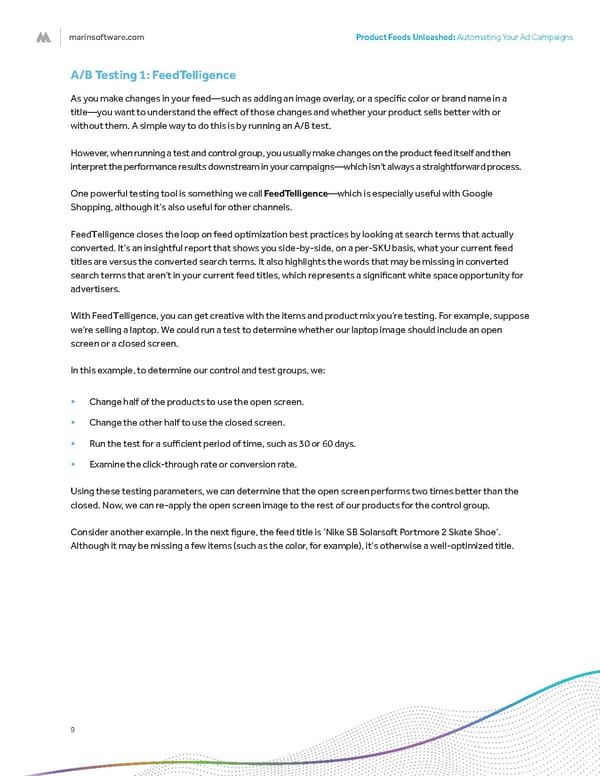marinsoftware.com Product Feeds Unleashed: Automating Your Ad Campaigns 9 A/B Testing 1: FeedTelligence As you make changes in your feed—such as adding an image overlay, or a specific color or brand name in a title—you want to understand the effect of those changes and whether your product sells better with or without them. A simple way to do this is by running an A/B test. However, when running a test and control group, you usually make changes on the product feed itself and then interpret the performance results downstream in your campaigns—which isn’t always a straightforward process. One powerful testing tool is something we call FeedTelligence —which is especially useful with Google Shopping, although it’s also useful for other channels. FeedTelligence closes the loop on feed optimization best practices by looking at search terms that actually converted. It’s an insightful report that shows you side-by-side, on a per-SKU basis, what your current feed titles are versus the converted search terms. It also highlights the words that may be missing in converted search terms that aren’t in your current feed titles, which represents a significant white space opportunity for advertisers. With FeedTelligence, you can get creative with the items and product mix you’re testing. For example, suppose we’re selling a laptop. We could run a test to determine whether our laptop image should include an open screen or a closed screen. In this example, to determine our control and test groups, we: • Change half of the products to use the open screen. • Change the other half to use the closed screen. • Run the test for a sufficient period of time, such as 30 or 60 days. • Examine the click-through rate or conversion rate. Using these testing parameters, we can determine that the open screen performs two times better than the closed. Now, we can re-apply the open screen image to the rest of our products for the control group. Consider another example. In the next figure, the feed title is ‘Nike SB Solarsoft Portmore 2 Skate Shoe’. Although it may be missing a few items (such as the color, for example), it’s otherwise a well-optimized title.
 Feed Optimization Whitepaper Page 8 Page 10
Feed Optimization Whitepaper Page 8 Page 10